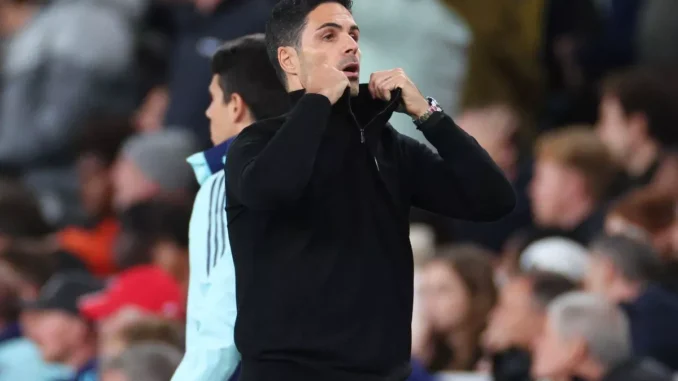
Five years ago, Mikel Arteta took the reins at Arsenal, a club rich in history but struggling for direction. Arteta, a former captain at the club and a protégé of Pep Guardiola, faced the monumental task of rebuilding a team that had lost its identity after years of inconsistency. Today, Arsenal stands as a revitalized force in English football, with Arteta earning praise for his transformative leadership. Here, we explore how Arteta has reshaped Arsenal over five years and what the future might hold for the Gunners.
The Early Challenges
When Arteta arrived in December 2019, Arsenal was in disarray. The team languished in mid-table, plagued by a lack of cohesion on the pitch and a divided fanbase. Arteta’s immediate focus was on restoring discipline and instilling a winning mentality. One of his first significant acts was overhauling the club’s culture. He emphasized accountability, unity, and hard work, laying the groundwork for long-term success.
Arteta’s first season ended on a high note as Arsenal claimed the FA Cup, defeating Chelsea in the final. This early success provided a glimpse of his potential, but it was clear that the squad needed significant reinforcements to compete consistently at the highest level.
Tactical Evolution
Arteta’s tactical philosophy has been central to Arsenal’s transformation. Initially adopting a pragmatic approach to stabilize the team, he gradually implemented a more expansive and fluid style of play. Inspired by his time under Guardiola, Arteta’s system emphasizes positional play, high pressing, and quick transitions.
One of his most notable tactical innovations has been the use of inverted full-backs, which has allowed Arsenal to dominate possession and control games more effectively. The midfield’s transformation, spearheaded by players like Martin Ødegaard and Thomas Partey, has been crucial in implementing Arteta’s vision. The arrival of players such as Gabriel Jesus and Oleksandr Zinchenko brought not only quality but also a winning mentality, crucial for challenging the Premier League’s elite.
Youth Development
Arteta has also prioritized youth development, making Arsenal one of the youngest and most exciting teams in Europe. Bukayo Saka and Emile Smith Rowe, academy graduates, have flourished under his guidance. The manager’s trust in young players like Gabriel Martinelli and William Saliba has paid dividends, as they have become integral to the team’s success.
This commitment to youth has not only rejuvenated the squad but also aligned with the club’s long-term strategy of sustainability. Arteta’s ability to blend youth with experience has created a balanced squad capable of competing at the highest level.
Rebuilding the Arsenal Brand
Beyond the pitch, Arteta has played a significant role in restoring Arsenal’s brand as a global footballing powerhouse. The club’s performances have reignited fan enthusiasm, leading to a vibrant atmosphere at the Emirates Stadium. The connection between the team and its supporters, once strained, has been rebuilt, with fans rallying behind Arteta’s vision.
The club’s recruitment strategy has also improved markedly under Arteta and technical director Edu. Arsenal has moved away from short-term fixes to focus on signing players who fit the manager’s philosophy and have long-term potential. This strategic approach has paid off, as evidenced by the team’s resurgence in domestic and European competitions.
What Comes Next?
As Arteta enters his sixth year at the helm, the question remains: What’s next for Arsenal? The team has made significant strides, but the ultimate goal is to reclaim the Premier League title and compete consistently in the Champions League. Arteta’s project is still a work in progress, and maintaining momentum will be crucial.
Key challenges lie ahead. Competing against financially dominant rivals like Manchester City and maintaining squad depth for multiple competitions will test Arteta’s managerial acumen. Additionally, keeping hold of key players such as Saka and Saliba, while continuing to attract top talent, will be vital for sustained success.
Another focus will be on evolving tactically to stay ahead of the competition. Arteta has shown a willingness to adapt, and his ability to innovate will be critical as opponents become more familiar with his approach.
Conclusion
Mikel Arteta’s five years at Arsenal have been nothing short of transformative. From stabilizing a faltering team to building a cohesive, competitive unit, Arteta has laid the foundation for a bright future. While challenges remain, the progress under his leadership offers hope that Arsenal can return to the pinnacle of English and European football. For now, Gunners fans can dream again, confident that their club is in capable hands.
Leave a Reply